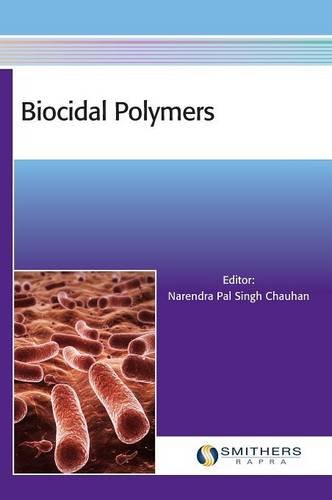

Most ebook files are in PDF format, so you can easily read them using various software such as Foxit Reader or directly on the Google Chrome browser.
Some ebook files are released by publishers in other formats such as .awz, .mobi, .epub, .fb2, etc. You may need to install specific software to read these formats on mobile/PC, such as Calibre.
Please read the tutorial at this link: https://ebookbell.com/faq
We offer FREE conversion to the popular formats you request; however, this may take some time. Therefore, right after payment, please email us, and we will try to provide the service as quickly as possible.
For some exceptional file formats or broken links (if any), please refrain from opening any disputes. Instead, email us first, and we will try to assist within a maximum of 6 hours.
EbookBell Team

4.4
32 reviewsChauhan Narendra Pal Singh. (ed.) Biocidal polymers 2016 [pdf 390sc 370c. 20.25mb]
Biocidal polymers are able to inhibit or kill microorganisms such as bacteria, fungi and protozoans. The advantages of antimicrobial polymers over conventional antimicrobial agents include their non-volatility, chemical stability, non-toxicity (difficult to permeate through the skin of animals), ability to prolong product life, increased efficiency and selectivity while minimising their environmental impact. Currently, there is an urgent requirement to develop a synthetic strategy involving different kinds of polymers whose potency against specific microorganisms is accompanied by less hazardous effects.
The main objective of this book is to provide detailed information on the synthesis, and mechanistic and technological aspects of synthetic and natural antimicrobial polymers including: cationic, amphiphilic, biomimetic, biodegradable chitin, chitosan, cellulose, pectin and so on, along with their chemical modification to produce polylactic acid- and polyethylene glycol-based copolymers, conducting polymers, antimicrobial plastics and rubber, functionalised antimicrobial polymers, polymer-metal nanocomposites, N-halamine-based polymers, peptides and so on. Methods of synthesising antimicrobial polymers, chemical modification, in addition to factors affecting their antimicrobial activities and major fields of applications are comprehensively described. Physico-chemical methods (nuclear magnetic resonance, Fourier-Transform infrared, confocal microscopy, differential scanning calorimetry, atomic force microscopy and scanning electron microscopy) are especially important in the study of the structure and other desired properties of monomers and polymers. Antimicrobial screening using diffusion and dilution methods, against several bacteria, fungi and protozoan, are also included.
This pioneering book is intended to be of general interest to microbiologists, biotechnologists, medical doctors